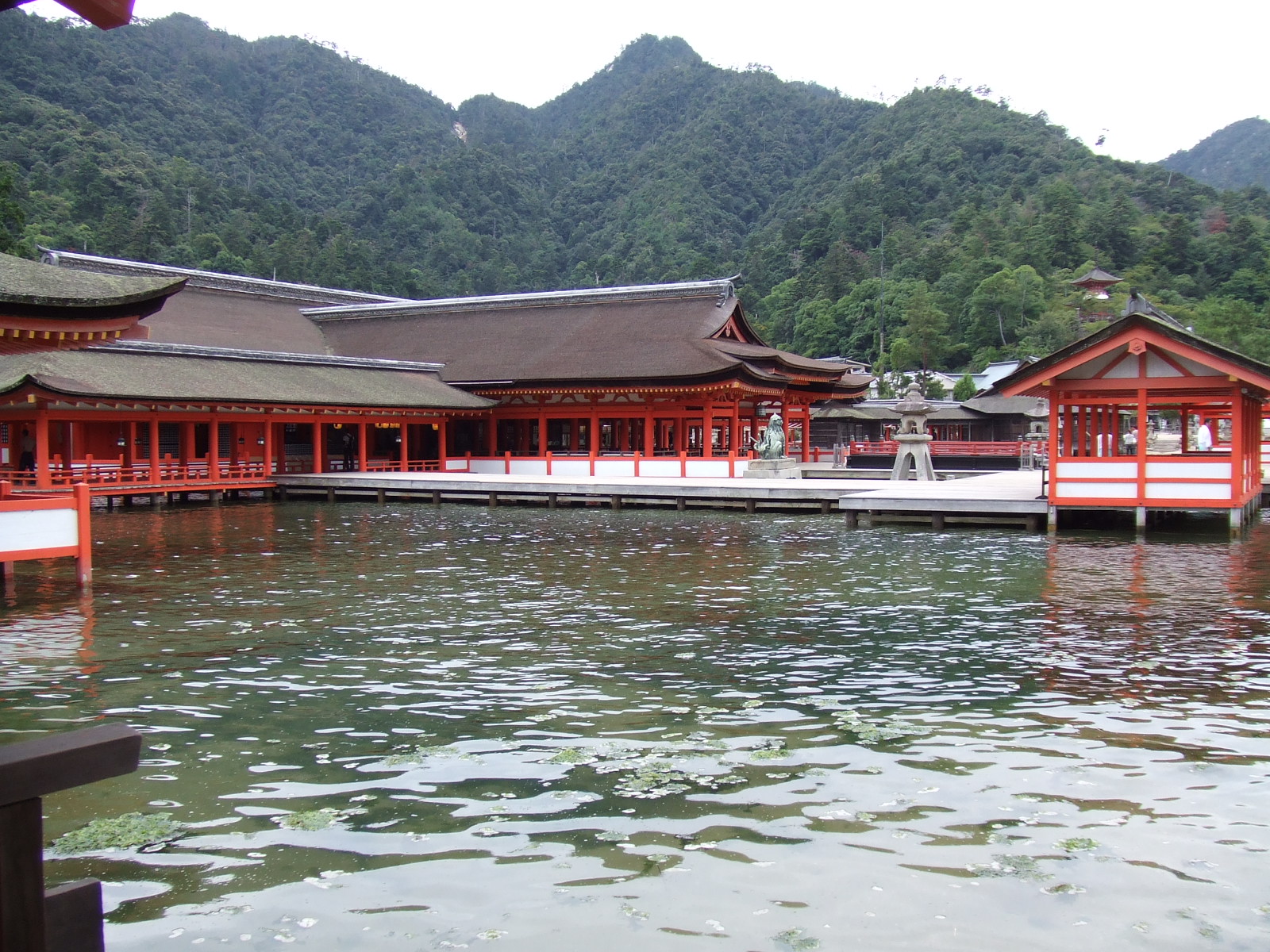Itsukushima Shrine in Hamada
Return to Intro
Itsukushima Shrine and Matsubara Bay
What comes to my mind while I hear the 2nd movement of Sibelius’
3rd symphony is the dimly lit Itsukushima Shrine in Hamada City.
The Shrine stands on a small hill overlooking Matsubara Bay, which
once upon a time thrived as a major trading
port of Japan, enjoying
its natural shape of a deeply intricate inlet,
for the trade between
Japan and China, Korea, or other south-east-Asian
countries. Now it
remains as a rustic piscatorial port. At
night one can see the light
of a few fishing boats offshore; except for
that, there is only a dark
sea.
Plodding along the shore
There is a long concrete seawall about a
meter in height around
the bay separating a few tens of rather shabby
houses from the water.
Between the wall and the houses, there is
a narrow space less than a
meter in width on which you may plod. If
you are lucky, you may come
across a few stray cats. The cats are not
necessarily ownerless. They
do not belong to a particular house, but
people feed them outside the
house. Some of them are friendly enough,
so you can enjoy stroking them.
Old prosperity
The Bay area, at first glance, is nothing
but a simple small rural
village. But you feel a sense of nostalgia
for the old days of prosperity
soaked in the land as well as in the depth
of the water. You may even have
an auditory hallucination of the sound of
the Shamisen, a musical instrument
used by Geisha girls at a feast, every here and there.
Itsukushima Shrine in Hiroshima
Dedicated to the marine God, an Itsukushima Shrine is found
in many seaside towns, the most famous one
being the one at Itsukushima
Island in Hiroshima, a world heritage.

Itsukushima Shrine in Hiroshima
Association of a Mermaid
The Shrine in Hamada is small, maybe smaller than 10 m square.
At night
the Shrine is lit with exotic lanterns, looking
like those of Chinese or
south-east-Asian make. Looking it up from
the seashore, visible from place
to place through the bush around it, you
feel a sense of sadness, exoticism,
history, and strange enough, energy and hope
toward the future. It reminds
us of such disconnected objects, presumably
related to a Scandinavian fairy
tale which I read as a child, as red candles,
a mermaid, and old temple, a
sea, lanterns, a small piscatorial village,
fishing boats, and so on.
Sibelius’ 3rd symphony, much simpler and milder than the
preceding ones, reminds me of the dimly lit
Shrine standing on a hill
overlooking the dark bay.

Matsubara Bay
